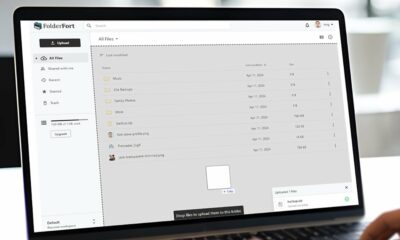TECHNOLOGY
The Role of Big Data in Analyzing Ratings and Recommendations

The use of big data in ratings and recommendations helps to determine the possibility of a customer repaying debt, buying a good or service, or the fate of a movie at the box office.
Ratings and recommendations exist across numerous industries; right from how many people visit a website to how many read a blog, to how much potential a customer has to repay a debt. As we are in the digital age, customers understand the importance of ratings and recommendations as these ratings ensure that an organization is providing quality services and that their after-sales services are also up to the mark. As 84% of people rely on online reviews today, rather than traditional recommendations, businesses are vying to increase their online ratings and improve their image on digital platforms. Big data analytics is a technology that holds the ability to provide actionable insights from the information stored in a company’s database for a plethora of causes. With big data for ratings, enterprises and consumers now feel that they have a technological solution for increasing their ranks to achieve a broad customer base or to avail high quality services.

How Ratings and Recommendations Work?
Ratings and recommendations are one of the few things that people refer to in the process of an online purchase. One of the reasons people rely on ratings and recommendation systems is because by reviewing the ratings, people get an insight of how well a product is performing and how it can prove to be a bad buy. Apart from proving to be beneficial for customers, ratings and recommendations also prove to be of aid for financial organizations offering loans. When an enterprise has the availability of customer credit ratings and recommendations at their disposal, determining the possibility of a customer repaying a loan becomes an easy task.
The reason rating and recommendations industry required transformation is the failure of traditional rating systems to provide accurate and reliable information. Ease of access and use by unqualified individuals also lead to ratings that differ and consumers buying products that are faulty.
How Big Data Can Assess Ratings and Recommendations
One of the primary reasons failing traditional review and rating systems is the unavailability of reliable information and actionable insights. With the advent of sources from which data generates, organizations have disparate sources to collect information. All of this data gathered from various sources culminates into big data for organizations.
With information arriving from almost every source, obtaining actionable insights is becoming easy for both the companies as well as the consumers. With the application of big data analytics, businesses can better know how well a customer can repay a loan based on information from the past.
Companies providing other services, apart from finance, can also leverage big data analytics to have better recommendations at their disposal about a customer. Big data analytics empower businesses with the availability of information, such as a customer’s buying habits and how well a service would suit their needs. With such actionable insights available on customer behavior, companies create offers that focus on an individual customer, which helps a company retain customer loyalty. CTOs and CIOs should now search for vendors who can help them with the right big data analytics software. They must also focus on how they can train employees to work with big data to increase sales for their company.
Source link


















You must be logged in to post a comment Login